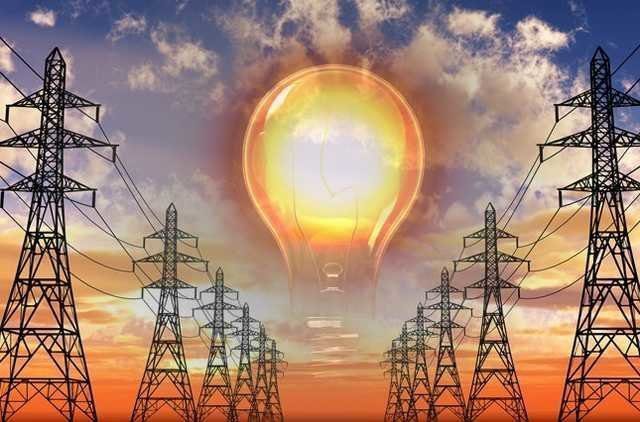Exciting Electricity Purchase Corruption Scheme
Picture this: you go to the market, and you see different sellers offering the same eggs for 50, 60, or 70 hryvnias per dozen. But you announce that you won't buy from anyone for less than 80 hryvnias. Then you end up buying from the first seller who raises the price to meet your demand. Seems pointless, right? Well, some electricity customers in Prozorro think otherwise. Our Money discovered a similar scheme in this market.
This scheme has been in operation for over a month and has recently gained popularity in various regions.
As an example, let's consider the purchase of public utilities by the Kamensky City Council of the Dnipropetrovsk Region for the expected amount of UAH 44 million. An interesting formula was included in the tender documentation, where participants had to calculate the price of their offers.
The buyer took the weighted average price of electricity on the market “for the day ahead” 3.36 UAH per kWh, which was before the announcement of the auction. They added an invented “indicator of the range of possible price fluctuations in the delivery period” of 67 kopecks. Then they included fixed VAT and the Ukrenergo tariff for energy transmission, which at the time of the auction amounted to UAH 0.35 per kWh. As a result, they arrived at a price of UAH 5.25 per kilowatt-hour.
Sensational corruption scheme in electricity purchase
As a result, the following occurred. The buyer stipulated that in order to participate in the auction, participants must declare their price according to the formula:
Participant's offer price = 5.25 UAH. + his margin
The scheme was finalized with one more requirement from the buyer. Bidders at the auction cannot declare a negative margin, meaning they cannot lower their price below UAH 5.25.
This is a crucial point. As mentioned earlier, the buyer factored in a “possible price fluctuation” of 67 kopecks – an excess over the RDN price. This is the amount that participants can subtract from the starting price, since they buy energy for delivery to the buyer either at the price of the RDA, or even at a lower price on the bilateral contracts market from manufacturers.
Nevertheless, the buyer prohibited offering such a discount, making it a condition for auction participation: if a participant offers a price below UAH 5.25, they will be rejected. Essentially, all participants were faced with the fact that they could only reduce their margin to zero and enter the auction with a price of UAH 5.25.
In this scenario, the tender would be won by the participant who entered an offer with zero margin into Prozorro first. This means the one who knew exactly when the tender announcements would be made public in Prozorro. Ultimately, this was the case.
The buyer uploaded the changes to the tender documentation into the system on December 7 at 21:03. Just seven minutes later, at 21:10, the second Gazenergoalliance participant staked out a place in the tender by providing the bank guarantee itself with a signature. They uploaded the remaining documents much later.
An announcement about a tender was published at 21:03.
The offer for the tender was already announced at 21:10.
Prikarpatenergotrade and Status Energo also participated. Prikarpatenergotrade was not allowed to take part in the auction because it did not provide a guarantee letter promising not to lower its profit below zero.
At the auction, Gazenergoalliance and Status Energo offered the same price of UAH 38,352,646.42, which was the minimum price of UAH 5.25 per kWh. None of the participants attempted to lower the price because the customer prohibited it. As expected, Gazenergoalliance won as they submitted the proposal before Status Energo.
Eventually, an agreement was signed with Gazenergoalliance on January 18 at a fixed price of UAH 5.25 per kWh, unaffected by market fluctuations.
This guarantee formula was advantageous for the participants in this situation.
The price of the contract stayed the same, but the volume decreased from 7.30 GWh to 7.21 GWh. However, the funding is UAH 13 million, covering a volume of 2.40 GWh.
Further evidence of the overpricing of energy obtained through this clever method can be found in other auctions held by different customers on the same days with Gazenergoalliance, but without this clever formula.
For instance, seven companies competed at the public utilities auction of the Lozovsky City Council of the Kharkiv Region. On January 24, they purchased energy from Gazenergoalliance at a price a quarter cheaper — at UAH 4.07 per kWh.
A corrupt scheme for purchasing electricity has been revealed.
When comparing the weighted average prices for RDA on the dates of these contracts, there was not a significant difference: UAH 2.85/kWh on January 18 and UAH 2.87/kWh on January 24. Therefore, there were no market reasons for the difference between UAH 5.25 and UAH 4.07.
A shocking corruption scheme in the purchase of electricity.
In other aspects, there was not much difference. Kamenskoye and Lozovaya ordered energy for 2022. In Kamenskoye, payment was expected within 10 banking days, and in Lozovaya, slightly faster, within 10 calendar days. The different customer areas do not matter because in both cases the prices do not include distribution costs and the transmission rate is the same.
So, thanks to a cunning formula, Kamensky got a minimum number of competitors and a quarter higher price of electricity than those who did not use any ingenious methods to combat dumping, except for the standard for Prozorro definition of an abnormally low price. And all this in a contract for 38 million hryvnias. A quarter of this amount is a very nice margin that the business could share with all interested parties.
According to Nashi Dengi, the case with Gasenergoalliance is not the only one. There is information about fifty auctions in different cities of Ukraine won by Gazenergoalliance, Energy Operator LLC, Gas.Ua LLC, Enera Chernihiv LLC, and Volt Postach LLC from customers who agreed to include the "indicator of price fluctuations" to tender requirements.
The state sold energy to Akhmetov and Kolomoisky for 0.5 billion at a 21% discount. (Updated)
The oligarch is surrounded. How Kolomoisky is losing influence and what threatens him in Ukraine




